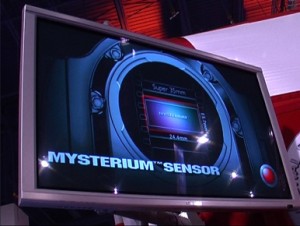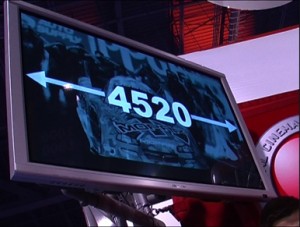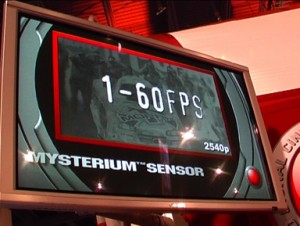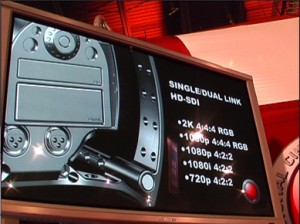Following up from last week’s very successful podcasts is the rest of the interview with Red Camera’s Ted Schilowitz – so called Leader of the Rebellion.

In this week’s follow up podcast from NAB, we talk to Ted Schilowitz, Leader of the Rebellion at Red Camera, which goes along with this discussion of the cameras’ possible roll in production.
This interview was the first press interview recorded after the unveiling of the Red One cameraon the first day of NAB in Las Vegas. With a starting price of only $17,500 the Red Camera was an instant sensation.
Red One promises to redefine digital capture.
Curent camera offer 1/5th the resolution, at half the frame rate for sometimes ten times the price. By offering such high quality capture so cheaply – the camera may well be the indie film makers ultimate tool… if the Red team can deliver.

For independent film makers, the cost of the initial digital cameras was so great that it outweighed the savings from not having to use film, process or scan. In the new age of Digital Intermediate, film scanning alone can be extremely expensive. Digiital cameras, especially the first generation of HDCAM cameras, had a small CCD. To resolve the image to a smaller patch, HD cameras required extremely high quality lens — 2.5 times the effective image quality of a 35mm lens. This meant that the lens were extemely bulky and the whole camera package was unfriendly to smaller productions. This is on top of the issues of reduced sampling quality and thus technical inflexibility.

This inflexible, large camera package was partly solved by the advent of HDv. These prosumer cameras are flexible, small and nimble but at the price of image quality. Not only was the sensor small, the data rates were extremely compressed making keying, effects work or even strong colour grading very difficult. Various incremental steps have moved the prosumer cameras closer to the bigger bulkier HD cameras. Advances such as full progressive and improved recording have helped, but on screen the images still suffered from being ‘electronic’ in appearence.
Meanwhile at the top end, HDCAM gave way to HD-SR based cameras that record full 4:4:4 quality and yet the frame rates were limited to a subset of what film cameras routinely do. The newest of these camera moved to 4K, which is universally agreed to be the upper limit of 35mm, but the cameras are extremely expensive and limited in avaliablity.

Enter Red One, it is small and light weight. Only 7 lbs, it can record 4K up to a stunning 60fps or 120 fps at 2K resolution. The Mysterium sensor is the size of super 35mm so you can use normal 35mm lens. This makes the Red ideal for indie film makers, visual effects and primary production. The Red camera could literally take hundreds of thousands of dollars out of a production. Hence the enormous interest and excitment.
The only problem is that the wider film community has yet to see any images, of any resolution. There is no real way to judge any camera until the images it produces can be critically judged. Still Red comes from a very well funded optics based company – and with no exisiting interests or businesses to protect, Red only stands to gain from wide spread acceptance and adoption of the Red One.
In reality the market for high end 4K cameras is limited to under a 1000 units worldwide, film or digital. On any one day only about 500 film cameras are deployed on fully funded productions globally. To truly be successful Red needs to vastly broaden the market in the wider documentary, indie film, corporate, music video and advertising markets. With this configuration, price and performance it is hard to imagine justifying shooting film for anything with a tight deadline or a high shooting ratio. If the Red delivers it will sweep through TVC and music video production faster than the adoption of digital stills photography, based on cost alone.
